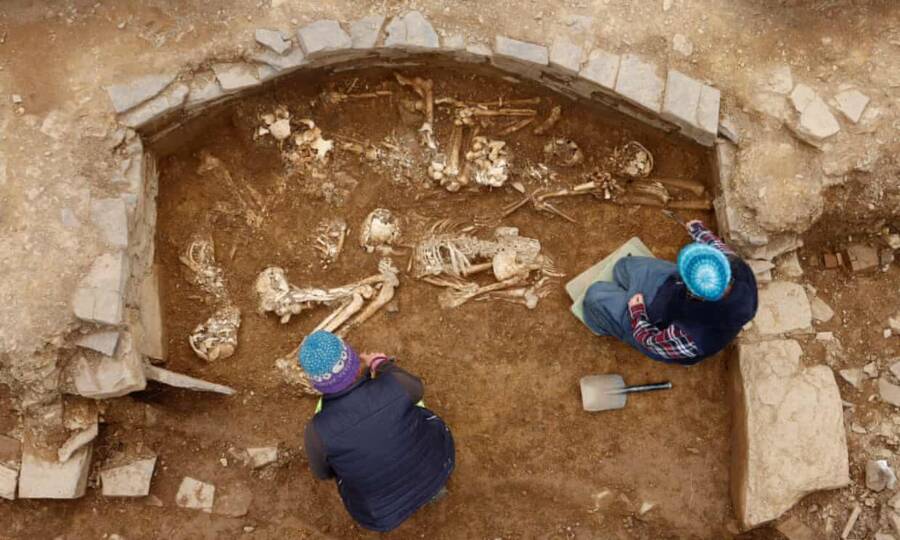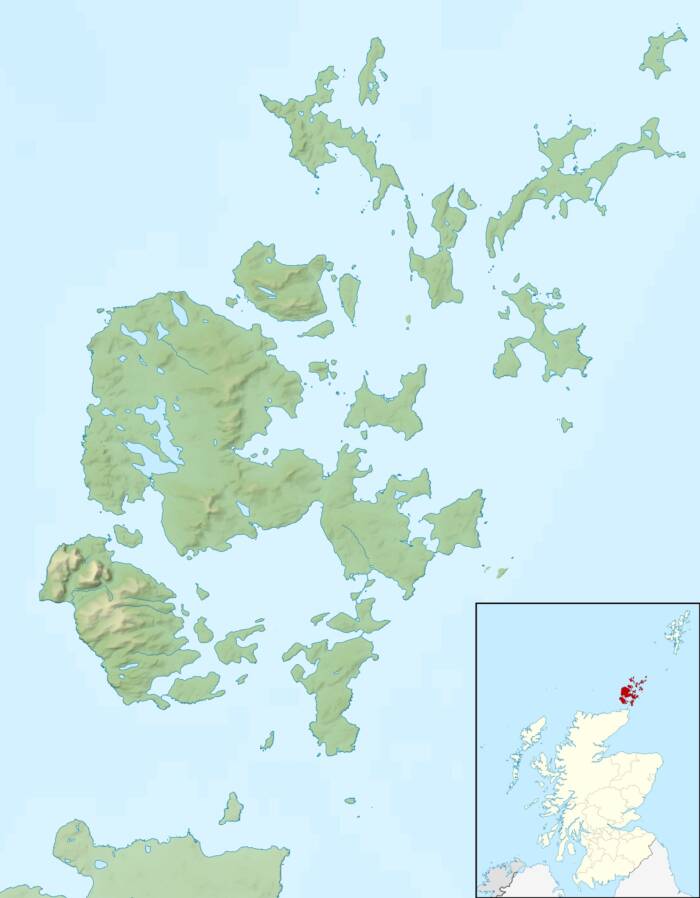A large Neolithic tomb built more than 5,000 years ago was just discovered in Scotland.

Archaeologists uncovered the tomb in the Orkney Isles off the northern coast of Scotland. It is estimated to date back to 3000 B.C.E. and contained the articulated skeletons of at least 14 men, women, and children — including two skeletons that appeared to be embracing.
The excavation was led by Dr. Hugo Anderson-Whymark, senior curator of prehistory at the National Museums Scotland, and Vicki Cummings, professor of Neolithic archaeology at Cardiff University, according to the Guardian.
The circular tomb measures about 50 feet in diameter and contains a stone structure accessed through a passage measuring approximately seven meters, or 23 feet, in length. The structure is composed of a long rectangular passage lined with six stone cells or side rooms.
“They really are engineering feats,” Anderson-Whymark said. “The tomb would have been an immense feature in the landscape when it was originally constructed, and the stonework inside would have been very impressive.”
The tomb had gone largely unnoticed until now, as the site had been flattened and largely destroyed without record in the 18th or 19th century when its stone was used for the construction of a nearby building, which was also demolished about ten years ago.

“Seven or eight metres across the interior is really big,” Anderson-Whymark said. “We had found not only the tomb, but then in situ articulated skeletons — the icing on the cake.”
The ruins of the tomb had first been discovered back in 1896 by a farmer’s son, who came across some of the stone walling, a stone macehead and ball, and a few of the skeletons. The findings were reported in a local paper and speculated to be a ruined tomb or a “chambered cairn,” but no one realized the significance or age of it until Anderson-Whymark came across the article during unrelated research.
Inspired by the article, Anderson-Whymark gathered students from the University of Central Lancashire and local volunteers for a three-week excavation of the site in Holm.
“Orkney is exceptionally rich in archaeology, but we never expected to find a tomb of this size in such a small-scale excavation,” Anderson-Whymark said. “It’s incredible to think this once impressive monument was nearly lost without record.”

Wikimedia CommonsA map of the Orkney Isles, where the tomb was found.
Several Neolithic tombs have been discovered in Orkney, but most of them survived as upstanding monuments. In contrast, this tomb had been buried beneath a field used for cattle farming.
“It is incredibly rare to find these tomb deposits, even in well-preserved chambered tombs, and these remains will enable new insights into all aspects of these peoples’ lives,” Cummings said.
The researchers now hope to use DNA analysis to determine if the skeletons in the tomb are related to each other, or if there are any relations to other tombs in Orkney.